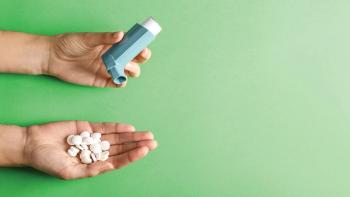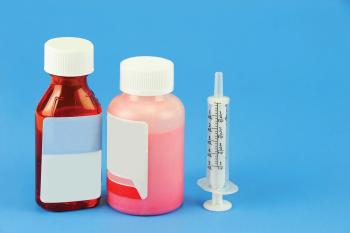
- Pharmaceutical Technology-10-02-2010
- Volume 34
- Issue 10
The Direction of Injectable Drug Delivery
The growth of biologics is an important factor for the injectable-drug delivery systems market. A look at the technical and market considerations affecting this sector.
Graham Reynolds, vice-president of marketing and innovation of pharmaceutical delivery systems at West Pharmaceutical Services (Lionville, PA), discusses the major trends in injectable-drug delivery.
IMAGE: INFLUX PRODUCTIONS, PHOTODISK, GETTY IMAGES
PharmTech: What key factors are influencing the injectable-drug market?
Reynolds: There are many factors affecting the growth of injectable-drug packaging and delivery today, most notably the continuing growth of biologic therapies, which are mostly injected, and the continuing growth of self-administered therapies for chronic conditions such as autoimmune diseases and diabetes. Challenges for these products can be split into two main areas: how to package and contain the drug to maintain safety, efficacy, and stability for an extended period of time and how to deliver these products in a way that ensures compliance, ease of administration (often away from a clinical environment), safety, and effectiveness.
With regard to packaging, recent trends include the drive toward cleaner and more secure primary containment systems that avoid interaction with the drug product and maintain the drug product's purity and effectiveness over time. Component manufacturers continue to develop sophisticated packaging components and delivery systems to support the requirements of complex drug products. Today's components are meeting increasingly stringent standards for quality and cleanliness. Although the components have changed little in appearance, the material science and manufacturing technologies that go into their creation have undergone significant advance. Increasing use of fluoropolymer-coated elastomer products and advances in plastic materials has produced a variety of vials and syringes that will be of great importance for primary container closure systems and medical devices. Also, many new biologics will be packaged in a prefilled device (a syringe or cartridge), and many will require reconstitution prior to administration.
PharmTech: What are key developments in injectable-drug product forms?
Reynolds: Liquid-drug presentations packaged in prefilled syringes continue to be a preferred route of administration for many new biologics. Historically, most of these syringes have been made from glass. Glass syringes may have inherent weaknesses that can have a negative impact on sensitive biologic molecules, notably the presence of silicone oil, which is used as a lubricant, and tungsten and glue, which are introduced as part of the manufacturing process. Breakage issues can arise with glass syringes during handling or delivery to the patient, particularly when a syringe is combined with a device such as an autoinjector that can exert excessively high force on the glass syringe. Glass manufacturers are overcoming some of these limitations, and increased focus is being placed on plastic syringes.
Because of increased interest in self-administration, development in syringes, cartridges, autoinjectors, and pens continues. Areas of interest have been the growth of disposable systems, enhancements in electronic systems, and a focus on improving the patient experience.
Needle-free systems continue to be evaluated for specific applications; however, the predominant route of delivery remains a needle. Advances in needle technology, as well as the design of devices that minimize needle exposure before and after injection, help to reduce injection pain and phobia.
Another growth market for injectable- drug delivery is for devices that can help prevent accidental needlestick injuries. The Occupational Safety and Health Administration (OSHA) published guidelines to define desirable attributes for a safety device. OSHA recommends systems with safety features that are integral to the device, which includes safety features that are passive and require no intervention by the user, and a device that is safe and effective for patient care.
PharmTech: What are important technical considerations for prefilled syringes?
Reynolds: Development of improved packaging and delivery systems must take into account the needs of the pharmaceutical or biotechnology company as they relate to filling and manufacturing of the product. Novel systems should be compatible with established filling equipment wherever possible. Cleanliness and sterility validation are key. Contamination within the packaging can lead to costly rejects at the end of the filling process. Excessive silicone within the system can lead to aggregation with certain proteins or the formation of particles.
Breakage during manufacturing can also be a concern, particularly with hazardous or expensive materials. Breakage can occur during handling or upon assembly into a device. Broken glass causes manufacturing delays, safety concerns, costly overruns, and product returns. Users and healthcare professionals are vulnerable to the risk of shards and exposure to drug that can leak from the packaging.
The addition of needlestick prevention devices to a prefilled syringe may also be required. In the case of a staked or inserted needle, this feature can be in the form of a device that is assembled to the syringe after filling. For a luer-lock syringe, a safety needle can be added as part of a convenience kit.
In terms of materials, cyclic olefin polymers (COP) are an alternative to glass. These materials are as clear as glass but are lighter and less prone to breakage. They are resistant to water transmission, which is an advantage for maintaining a drug's shelf life. Used with a plunger coated with a fluoropolymer film, a COP syringe barrel is silicone free, which is an advantage compared with a glass syringe.
PharmTech: Injectable devices used by a patient at home are an important development in increasing patient compliance. What are noteworthy advances in the design of such devices?
Reynolds: Many complex diseases and chronic conditions such as multiple sclerosis, rheumatoid arthritis, and anemia require home-based administration of injectable treatments. This need has spawned increased interest in drug-delivery systems that are safe, convenient, and help simplify drug administration, especially for nonhealthcare professionals. Autoinjectors are a convenient delivery method for drugs and biologics. They can ease drug administration for patients who must self-inject and who may have dexterity issues that impact their ability to use a syringe.
Patients who use injection devices at home are concerned with several issues. They want a device that is easy to use, offers audible, tactile and visual evidence that the drug has been fully delivered, and safely and automatically inserts the needle and retracts it after injection. These are among the critical success factors that should be considered for an autoinjector system. The compatibility between the autoinjector and the syringe is also an issue. Glass syringes may be problematic for certain uses. The flexibility of a COP syringe may be a better choice for an autoinjector system because COP syringes offer better control of dimensional tolerances and more consistent functional performance, especially when provided without the added variability associated with uneven siliconization.
PharmTech: Product life-cycle extension such as reformulating a pharmaceutical product is an important strategy for solid-dosage forms. Is such an approach relevant for injectable drugs in switching to other product forms?
Reynolds: Given that many biologics, through their nature, are most effectively delivered by injection, the focus has been on optimizing the injection experience for the patient or caregiver. This process involves minimizing preparation steps, providing convenience kits with all necessary components included, and providing the drug within a ready-to-inject disposable format.
A good example of product life-cycle extension is shown in the evolution of the drug Enbrel (etanercept), which was initially launched as a lyophilized product in a vial. The first evolution was to provide a reconstitution kit, which simplified the preparation process. Subsequently, a liquid form was introduced in a prefilled syringe, and then a disposable autoinjector was added. Through this evolution, the patient experience was enhanced. In many cases, this evolution is dependent upon an effective combination of the drug container and the delivery device to ensure the stability of the drug and ease of administration, and requires an integrated approach. Such an evolution can help differentiate a drug in a crowded market.
PharmTech: Looking into the future of injectable-drug delivery, what do you see as possible noteworthy developments during the next 5 or 10 years?
Reyonlds: We expect that more injectable biologic drugs will be approved and come to market, which will drive the need for convenience of administration. There will be longer-acting, higher-viscosity drugs requiring less frequent doses that will present new manufacturing and administration challenges. With more challenges to the developers of these products, cleaner, safer, and more reliable packaging systems, such as syringes or vials manufactured from plastic materials that can be combined with fluoropolymer-coated elastomer components, will increase.
Increasing self-administration will drive the development of new injection devices, with capabilities to handle higher viscosity materials while providing an improved patient experience. More emphasis will be placed on optimizing devices for various patient groups, while building on a platform technology suitable for drug manufacture and filling.
Product life-cycle management will continue with increasing emphasis on maintaining drug stability and effectiveness through each stage. This will lead developers to seek novel materials, which can be utilized early in the drug-development cycle through to a variety of containment systems, including vials, syringes, cartridges, and novel containers.
Articles in this issue
over 15 years ago
This Again?over 15 years ago
An Overview of NanoCluster Powder Formulation Technologyover 15 years ago
Risk Mitigation in High-Potency Manufacturingover 15 years ago
Needles' Days Are Numberedover 15 years ago
Report from Europeover 15 years ago
Buyers in Short Supplyover 15 years ago
In the Spotlight October 2010over 15 years ago
An Unfocused Handbook on Environmental Monitoringover 15 years ago
Vaccine Manufacturing RebornNewsletter
Get the essential updates shaping the future of pharma manufacturing and compliance—subscribe today to Pharmaceutical Technology and never miss a breakthrough.




